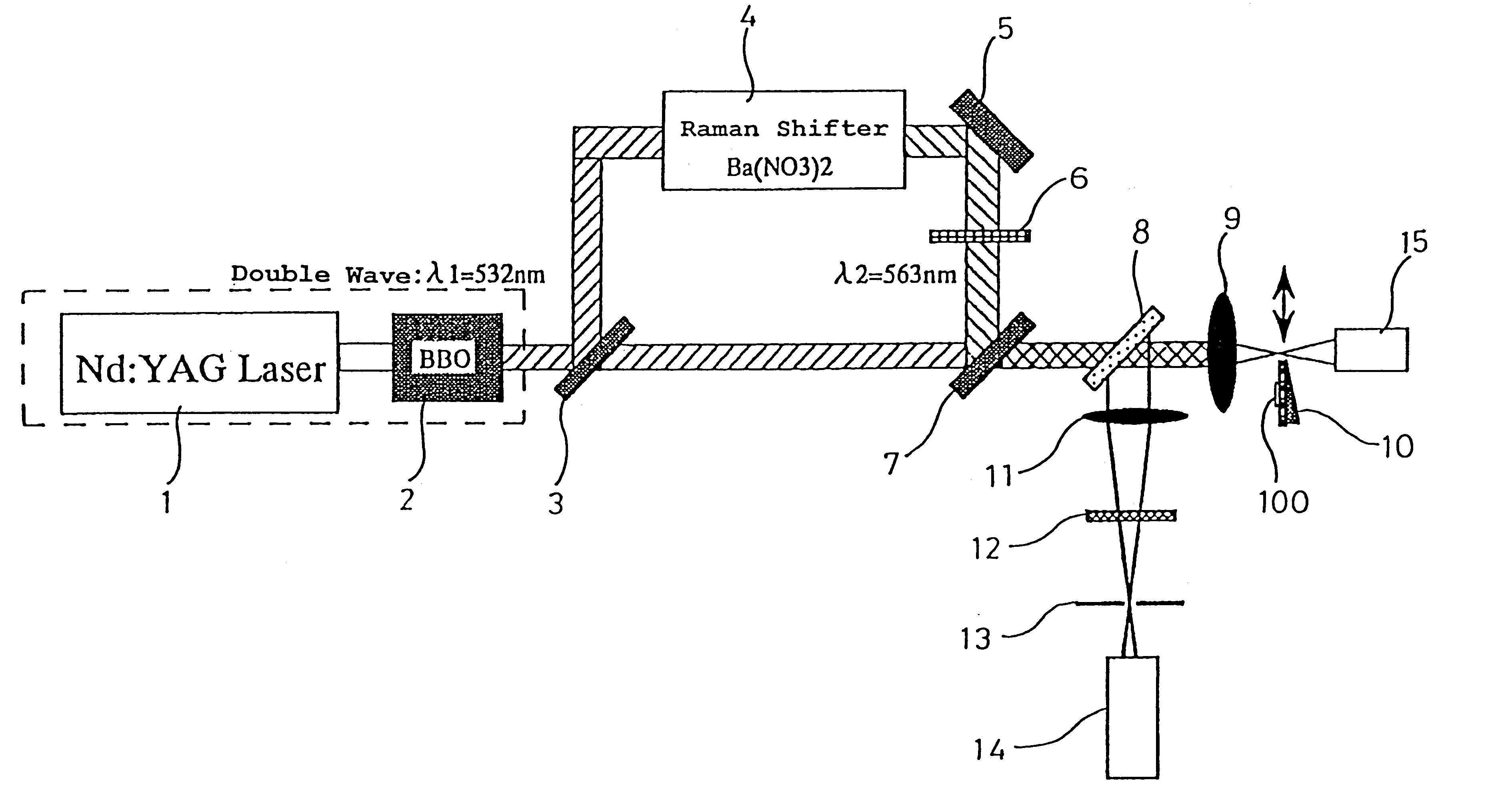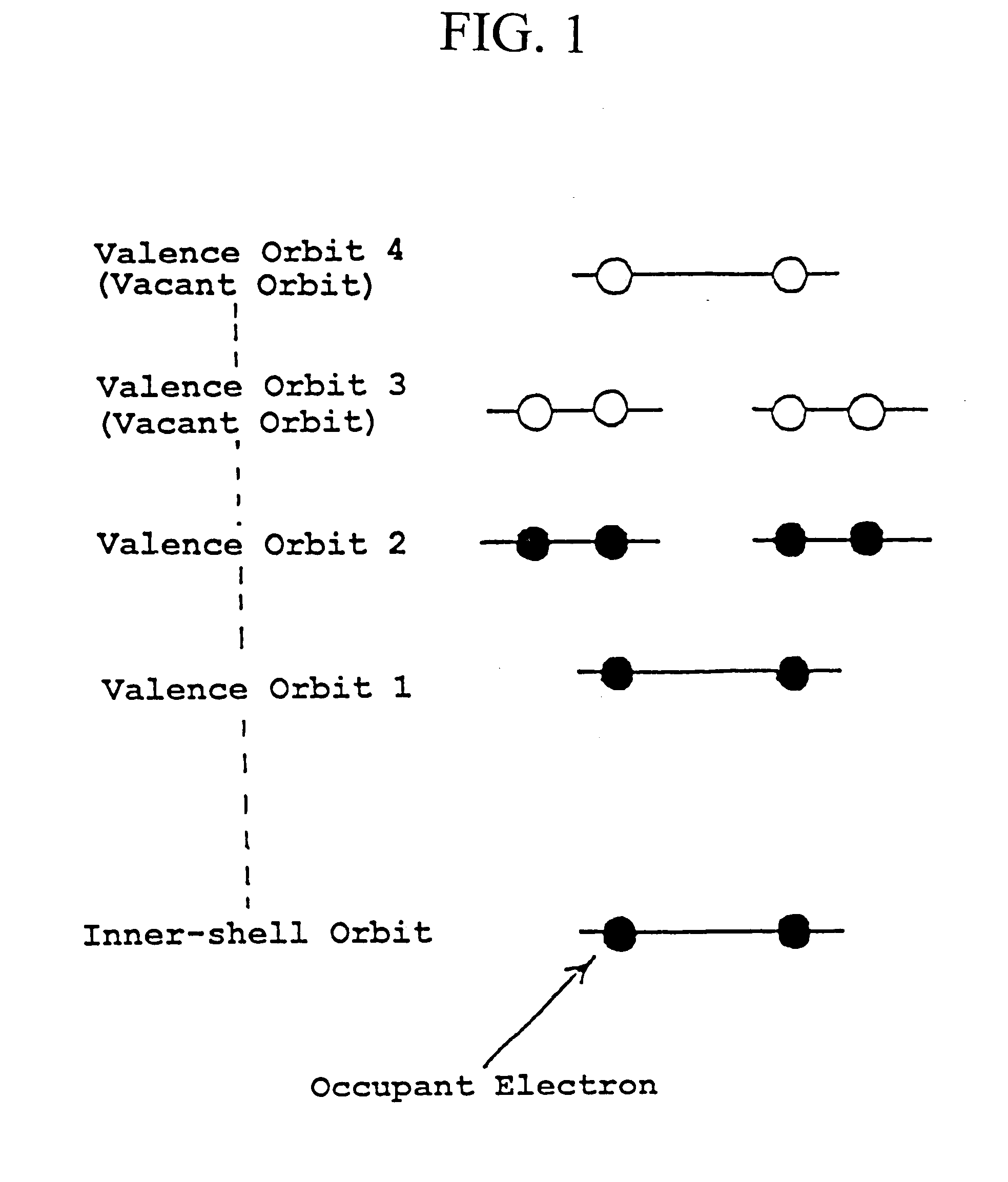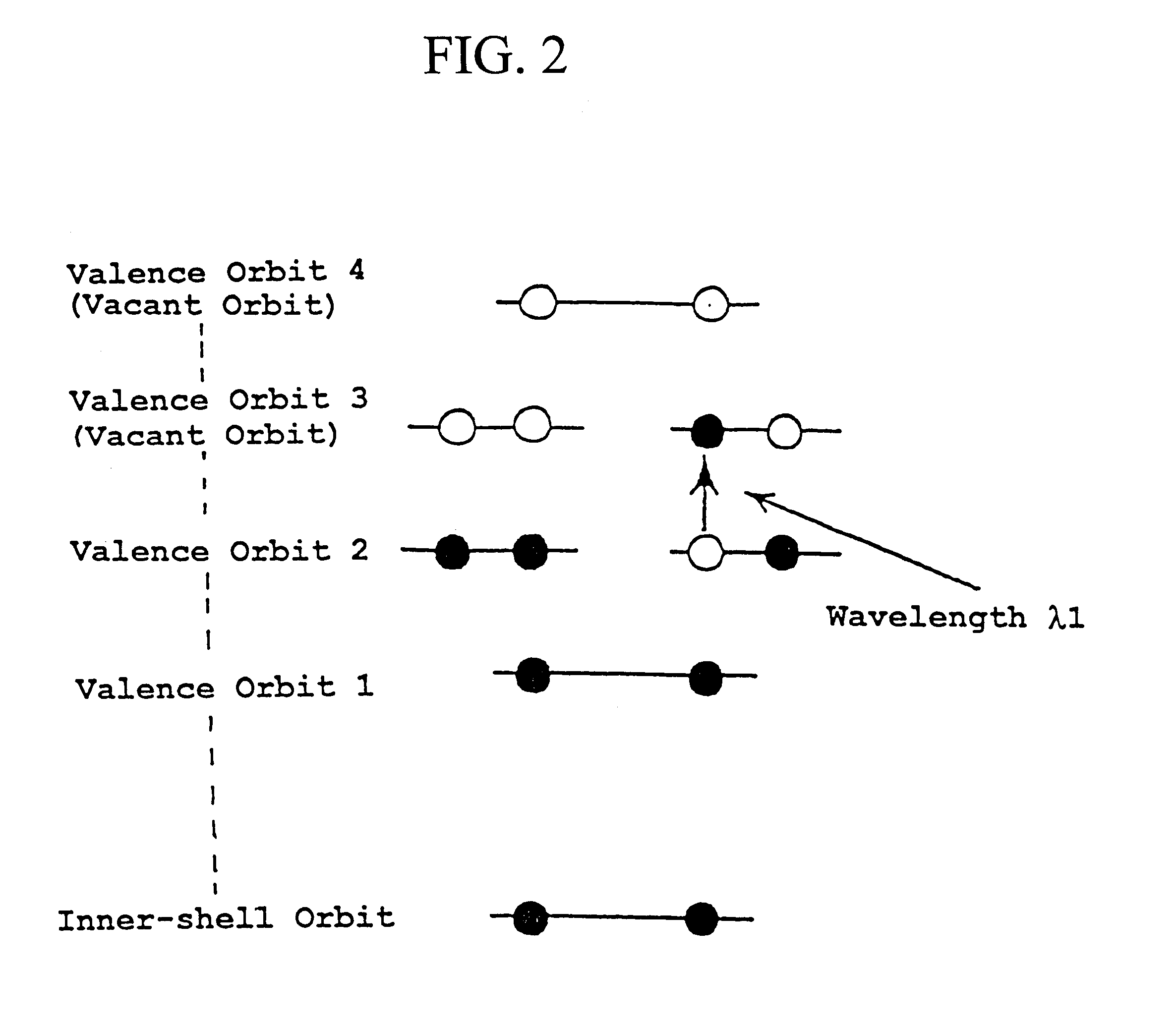Super-resolution microscope system and method for illumination
a microscope system and super-resolution technology, applied in the field of super-resolution microscope systems and methods for illumination, can solve the problems of excessive intensity of high-intensity lasers against biological cells of specimens, influence on bio-species, etc., and achieve the effects of enhancing resolution, reducing diffractive limits, and enhancing numerical apertures
- Summary
- Abstract
- Description
- Claims
- Application Information
AI Technical Summary
Benefits of technology
Problems solved by technology
Method used
Image
Examples
example 1
In the microscope system of this invention, the adjusted specimen is dyed with the Rhodamine 6G, and the microscope body is provided with the YAG laser as the light source for the pump light (i.e., the light of the wavelength .lambda.1 for exciting the Rhodamine 6G from the ground state S0 to the first excited state S1).and the light source for the erase light (i.e., the light of the wavelength .lambda.2 for exciting the Rhodamine 6G in the first excited state S1 to the second excited state S2). The microscope body is further provided with the Raman shifter as the wavelength modulating element of the YAG laser.
The Rhodamine 6G can realize, as described hereinbefore, an excellent fluorescent inhibition by double resonance absorption and induced emission, as described hereinbefore, and its excitation wavelength .lambda.1 from S0 to S1 is 532 nm and its excitation wavelength .lambda.2 from S1 to S2 is 560 nm. Hence, the 2-nd harmonics light (=532 nm) of the YAG laser is employed as the...
example 2
In the foregoing Example 1 the condensed beam of the erase light has the phase distribution in which the phase changes continuously from 0 to 2.sigma. when turned once around the optical axis. On the contrary, in the present Example 2, the condensed beam of the erase light has a discontinuously changing phase distribution.
In order to give the discontinuously changing phase distribution to the condensed beam of the erase light, for example, there may be used a phase plate which has a refractive-index distribution (n1.about.n8).changing discontinuously around the optical axis, as illustrated in FIG. 21.
Here, the intensity distribution of the condensed beam of the erase light and the intensity distribution of the fluorescence to be emitted are determined in the case where the fluorescence labeler molecule is the Rhodamine 6G and have the optical parameters and the environmental parameters as shown in the Table 1 and the Table 2, respectively, and the condensing optical system of the mi...
example 3
For the microscope system of this invention, it is the most desirable that the beam obtained by condensing the erase light that is the light of the wavelength .lambda.2 be the 1-st-order-Bessel-beam that is a nondiffractive beam. However, in order to give the microscope body a theoretical super-resolution, the beam may have the aforementioned shape in which the intensity at the central portion is zero.
Therefore, the beam having a phase modulated by the phase plate, as exemplified in FIG. 18 or 22, may be focused in a reduced scale by the ordinary condensing optical system, i.e., the condensing optical system not having the zonal optical system as in the Example 1. Then, although nondiffraction disappears, an excellent super-resolution can be realized.
FIG. 25 illustrates an intensity distribution of a condensed beam of an erase light and a fluorescent intensity distribution, which are calculated when the specimen is dyed with the rhodamine 6G and the shading ratio of the pupil is 0 a...
PUM
 Login to View More
Login to View More Abstract
Description
Claims
Application Information
 Login to View More
Login to View More - R&D
- Intellectual Property
- Life Sciences
- Materials
- Tech Scout
- Unparalleled Data Quality
- Higher Quality Content
- 60% Fewer Hallucinations
Browse by: Latest US Patents, China's latest patents, Technical Efficacy Thesaurus, Application Domain, Technology Topic, Popular Technical Reports.
© 2025 PatSnap. All rights reserved.Legal|Privacy policy|Modern Slavery Act Transparency Statement|Sitemap|About US| Contact US: help@patsnap.com



